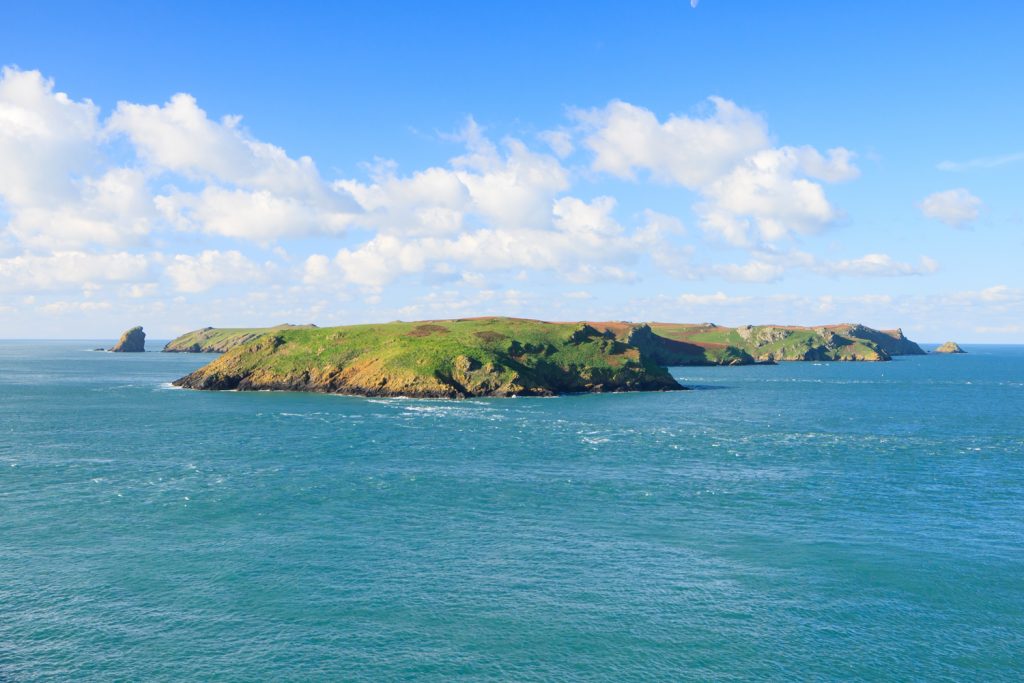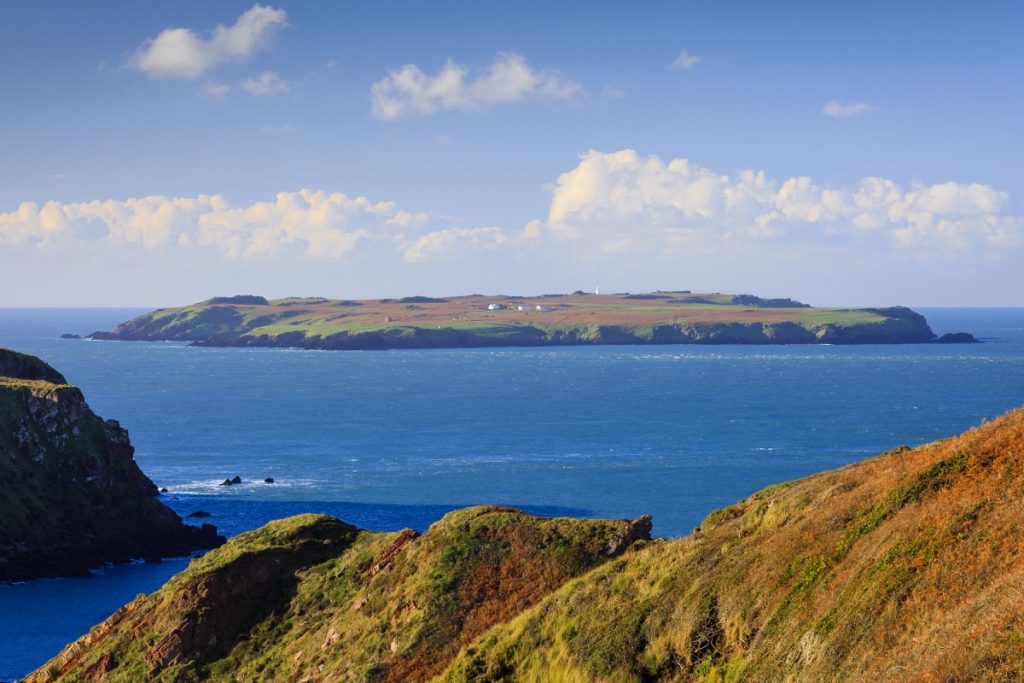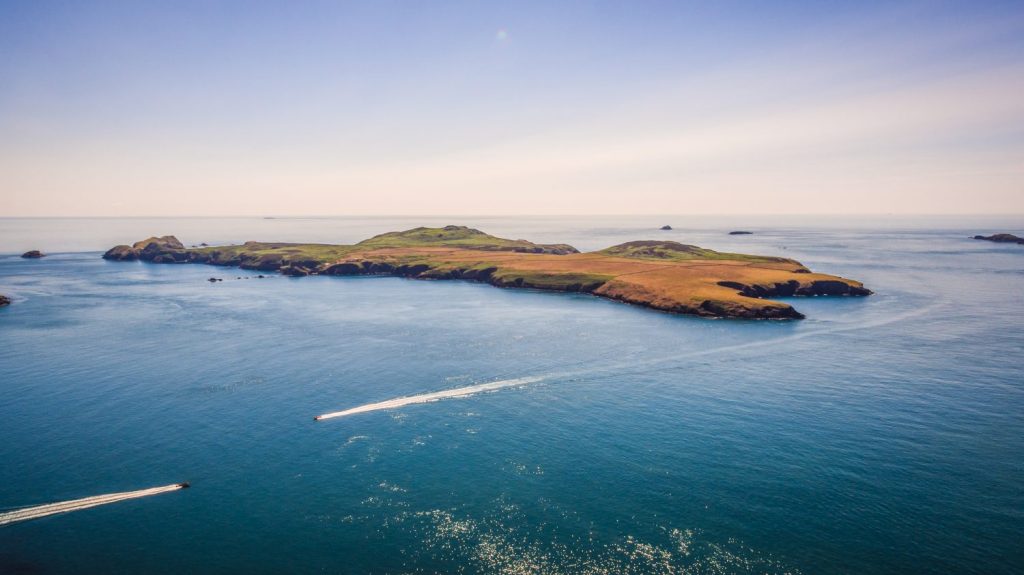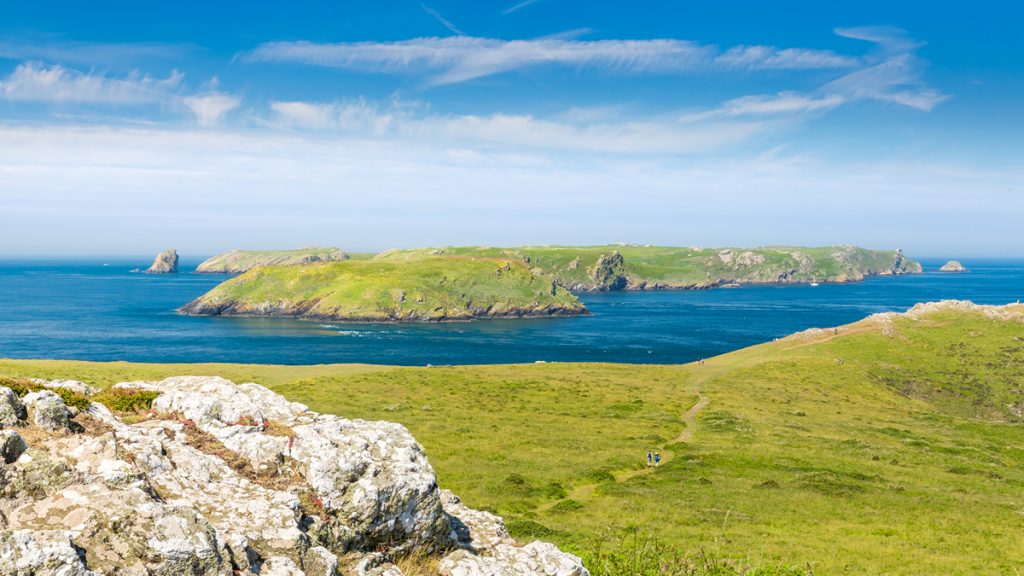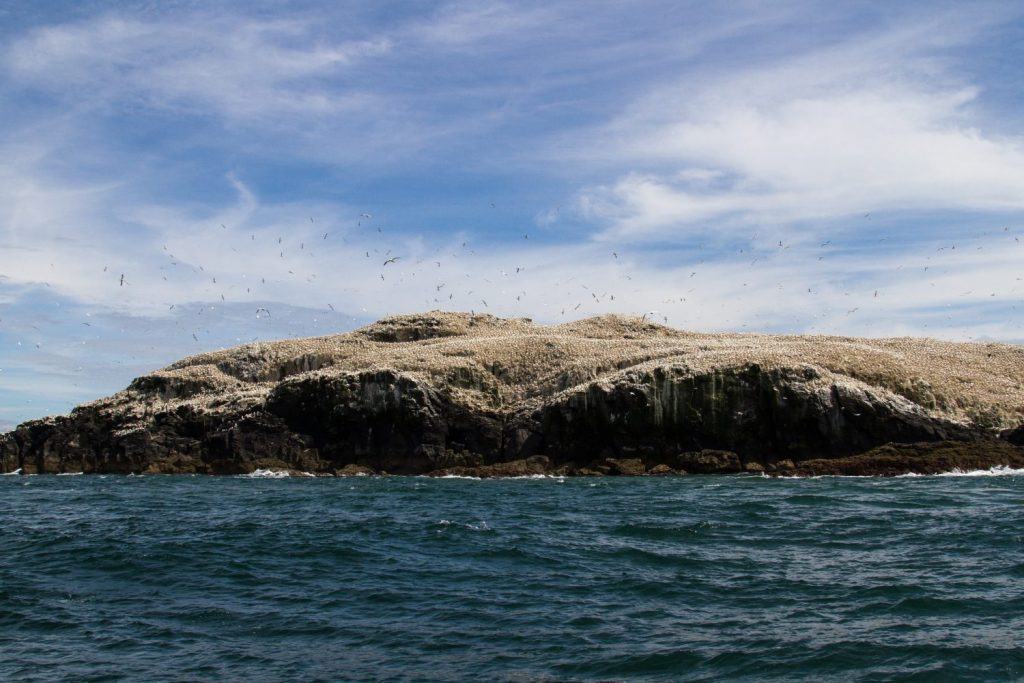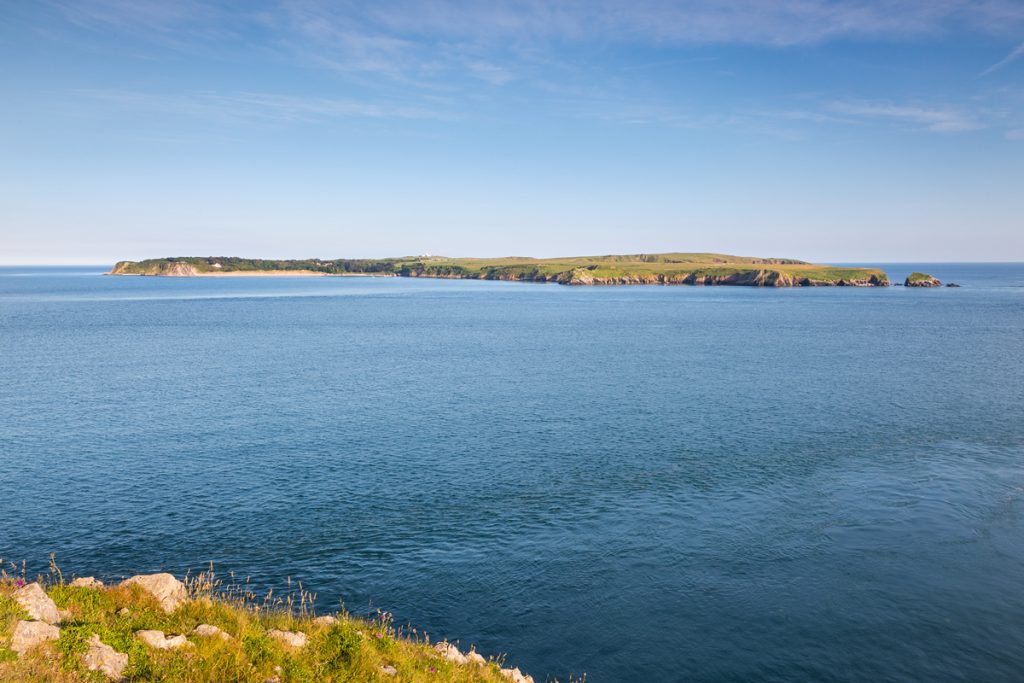Adjoining Caldey is St Margaret's Island. A medieval chapel of that name once stood on the island but was converted in Victorian times into housing for the men who quarried the island’s limestone. The island is now uninhabited and is a small but important nature reserve.
The island has colonies of cliff-nesting guillemots and razorbills, cormorants and a good mix of all three big gulls: great black-backed, lesser black-backed and herring gulls. For several years there have been gannets circling and setting up territories on the north-east side of the island, which could perhaps become a future gannetry.
A few pairs of puffins breed on the slopes facing towards Tenby, but rats keep down the numbers of smaller ground-nesting birds. The island vegetation is richly luxuriant with thick sea beet, sea mayweed and tall rank grasses.
The island was quarried until 1851. There are remains of cottages, a walled field, storage sheds and a well with sweet water still flowing. One quarry, with the help of a few storms in the winter of 2001/02 almost split the island in two.
Where is St Margaret's Island?
St Margaret's Fact File
- Owned by: Picton Castle Estate, managed by Wildlife Trust of South and West Wales
- Access: No public access
- Park Area: South
- Grid reference: SS120793
